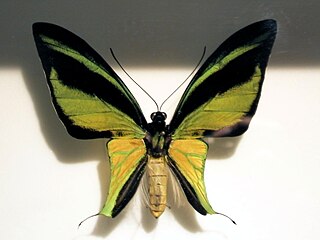Related Research Articles

The smooth newt, European newt, northern smooth newt or common newt is a species of newt. It is widespread in Europe and parts of Asia, and has been introduced into Australia. Individuals are brown with a spotted underside that ranges in color from orange to white. They reach an average length of 8–11 cm (3.1–4.3 in); males are larger than females. The newts' skins are dry and velvety when they are living on land, but become smooth when they migrate into the water to breed. Males develop a more vivid colour pattern and a conspicuous skin seam (crest) on their back when breeding.

The Iberian grey shrike is a member of the shrike family. It is closely related to the great grey shrike, Lanius excubitor, and its plumage is generally similar to the great grey shrike apart from the differences noted below. The Iberian was previously considered conspecific with the great grey; where they co-occur, they do not interbreed and are separated by choice of habitat.

The clamorous reed warbler is an Old World warbler in the genus Acrocephalus. It breeds from Egypt eastwards through Pakistan, Afghanistan and northernmost India to south China, southeast Asia and south to Australia. A. s. meridionalis is an endemic race in Sri Lanka.

The kākā is a large species of parrot of the family Nestoridae found in native forests of New Zealand. Two subspecies are recognised. It is endangered and has disappeared from much of its former range, though conservation efforts mean it is now increasingly common across Wellington.

Manilkara zapota, commonly known as sapodilla, sapota, chikoo, chico, naseberry, or nispero is a long-lived, evergreen tree native to southern Mexico, Central America and the Caribbean. An example natural occurrence is in coastal Yucatán in the Petenes mangroves ecoregion, where it is a subdominant plant species. It was introduced to the Philippines during Spanish colonization. It is grown in large quantities in India, Pakistan, Thailand, Malaysia, Cambodia, Indonesia, Vietnam, Bangladesh and Mexico.

The savanna hawk is a large raptor found in open savanna and swamp edges. It was formerly placed in the genus Heterospizias. It breeds from Panama and Trinidad south to Bolivia, Uruguay and central Argentina.

Notophthalmus meridionalis, the black-spotted newt or Texas newt, is a species of aquatic newt native to northeastern Mexico and southern Texas in the United States.

Mammuthus meridionalis, or the southern mammoth, is an extinct species of mammoth native to Europe and Central Asia from the Gelasian stage of the Early Pleistocene, living from 2.5–0.8 mya.

Ornithoptera meridionalis, the southern tailed birdwing, is the smallest species of the genus Ornithoptera. It is known from a handful of localities in southeast Papua, New Guinea and several localities along the south coast of Irian Jaya.

Harpyhaliaetus is a former genus of eagles. Recent studies have shown that the solitary eagle is closely related to the black-hawks, in particular the savanna hawk which is smaller and browner but otherwise very similar to Harpyhaliaetus. Therefore, this genus is now merged into that of the black-hawks.
The Isla De La Juventud tree hutia or southern hutia is a subspecies of rodent in the subfamily Capromyinae. It is endemic to lowland moist forests on Isla de la Juventud in Cuba. It is threatened by habitat loss and is considered Critically Endangered by the IUCN Red List.

The southern woolly lemur, or southern avahi, has been recently recognized as a separate species of woolly lemur in 2006 by Zaramody et al. It is a nocturnal and pair-living species. Groups can range from 2 to 5 individuals. A study in Sainte Luce forest revealed home range varied from 2.2 to 3.5 ha and that males can have larger home range and cover longer daily distances than females, in agreement with the territory defence and mate guarding hypotheses.

Psilocybe meridionalis is a psychedelic mushroom which has psilocybin and psilocin as main active compounds. This mushroom is closely related to Psilocybe stuntzii but can be distinguished by its smaller spores and the presence of pleurocystidia. This is the only species of Psilocybe from section Stuntzii which has been found in Mexico. It is known only from the type location in Neverias, Sierra de Cacoma, Jalisco, Mexico.

The Chatham kaka or Chatham Island kaka is an extinct parrot species previously found on the Chatham Islands, New Zealand. The first individuals were thought to belong to the kaka, but detailed examination of the subfossil bones showed that they actually belong to a separate endemic species. The species became extinct within the first 150 years of the arrival of the Polynesians around 1550, long before any European settlers. No skins or descriptions are available.
Digama meridionalis is a moth of the family Erebidae first described by Charles Swinhoe in 1907. It is found in much of southern and eastern Africa.

Agdistis meridionalis, the sea-side plume, is a moth of the family Pterophoridae, first described by the German entomologist Philipp Christoph Zeller in 1847. It is found in Europe.
Cymatonycha castanea is a species of beetle in the family Cerambycidae. It was described by Bates in 1874. It is known from Costa Rica, Honduras, and Guatemala.
Cymatonycha fasciata is a species of beetle in the family Cerambycidae. It was described by Chemsak and Noguera in 1993. It is known from Mexico.
Plantae preissianae sive enumeratio plantarum quas in australasia occidentali et meridionali-occidentali annis 1838-1841 collegit Ludovicus Preiss, more commonly known as Plantae preissianae, is a book written by Johann Georg Christian Lehmann and Ludwig Preiss.
Garrigatitan is a genus of titanosaurian dinosaur from the late Cretaceous Period of the Grès à Reptiles Formation in France. The genus contains a single species, Garrigatitan meridionalis. Some specimens regarded as subadults or adults pertain to individuals estimated to be 4–6 metres (13–20 ft) long, whereas a tentatively referred specimen belonged to an individual estimated to be 12–16 metres (39–52 ft).
References
- ↑ BioLib.cz - Cymatonycha meridionalis. Retrieved on 8 September 2014.